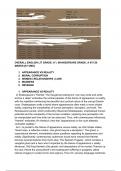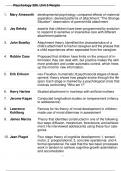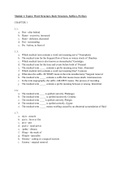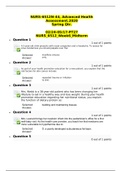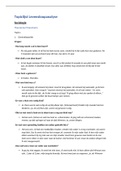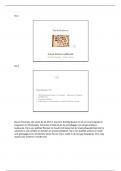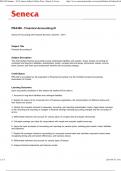Essay
WJEC A* ENGLISH LITERATURE HAMLET SHAKESPEARE 5 ESSAY PLANS
- Institution
- WJEC
WJEC EXAM BOARD: GRADED A*, 97/120 MARKS ON SHAKESPEARE PAPER UNIT 4 [PROOF SHOWN ON FIRST PAGE] FULL 5 essay plans with AO1, AO2, AO3, AO5 for Shakespeare Hamlet which covers all possible themes for the 80 marker. 1. APPEARANCE VS REALITY 2. MORAL CORRUPTION 3. WOMEN/ RELATIONSHIPS/ LOVE ...
[Show more]
